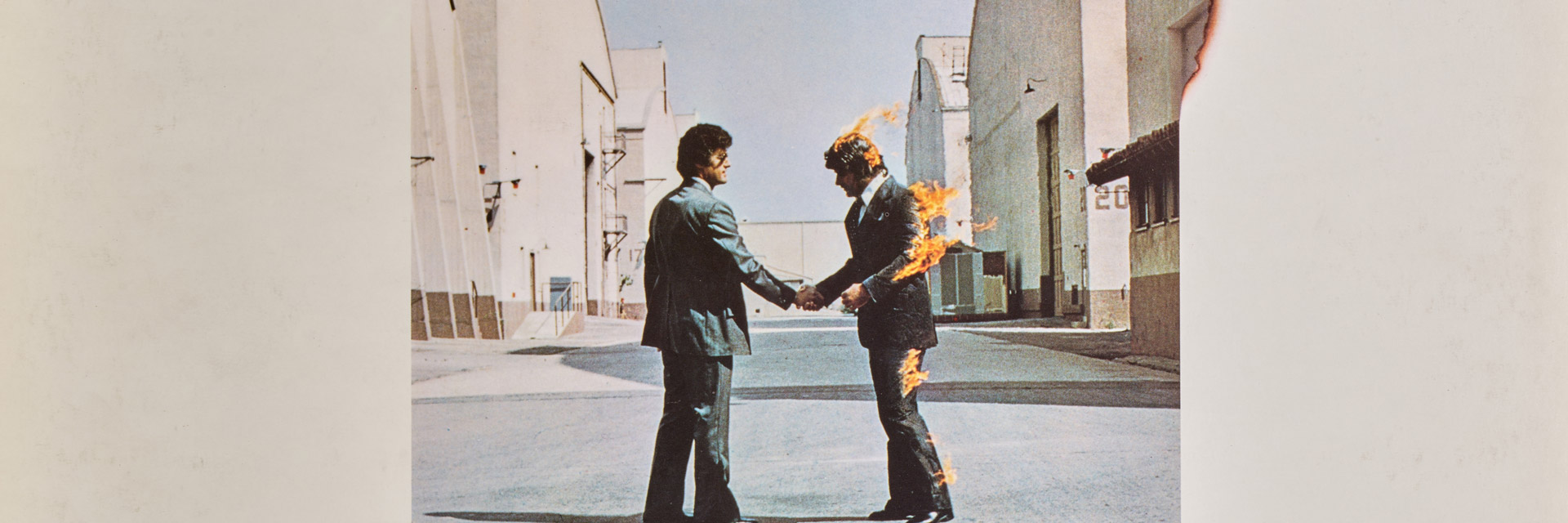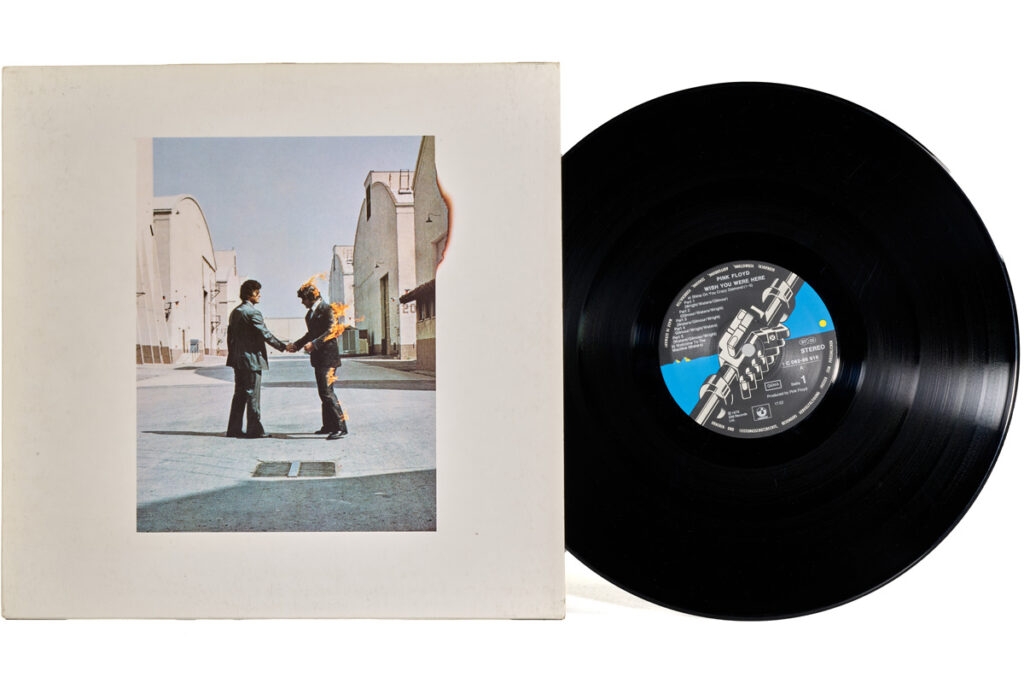In their early days, Pink Floyd had two kinds of pieces: instrumental sound experiments and odd, quirky little songs.
Only with David Gilmour’s brilliant guitar playing did a third style emerge, starting with the third album: a hypnotic, otherworldly beauty. The album Wish You Were Here seemed in 1975 to be the culmination of this third style. Never before had a rock record sounded so perfectly crafted and cohesive in terms of audio design, production, and aesthetics. Never before had there been such varied, ethereal, and tastefully used synthesizer colors. Even the rockier moments on the album were cool and controlled, the funk rhythms cleverly reined in, the vocal harmonies otherworldly — and in the first eight minutes of the record, there are already three of those mesmerizing Gilmour solos. Even the sound effects were no longer used provocatively, but placed artfully in intros and transitions: the glassy tones at the beginning of “Shine On,” the mechanical and automated noises in “Machine,” the radio in the transition from “Have a Cigar” to “Wish You Were Here,” or the wind sounds at the end of that track. The Village Voice praised the music’s “symphonic dignity.” Gilmour and Wright called Wish You Were Here their favorite Pink Floyd album, and Waters called it one of the band’s “most complete.” It regularly appears among the top ten prog-rock or classic-rock albums.
Yet the band struggled quite a bit with their ninth studio album. After its predecessor The Dark Side of the Moon (1973) — at the time the most successful album in music history — the pressure to create something of equal stature was paralyzingly intense. Nick Mason called that the “dark side” of the Dark Side album. For almost two years, the band pushed aside the idea of making a new record — Pink Floyd nearly broke up during that period. To buy time, they experimented with musique concrète (the project was called Household Objects) or released a compilation album (A Nice Pair). “All of our childhood dreams had already come true,” says Gilmour. Even when they finally went into the studio in January 1975, there was still a lot of downtime: “There were days when we did nothing at all.” Fortunately, the band already had two new pieces in their live set: “Shine On You Crazy Diamond” (probably in embryonic form) and “Have a Cigar.” Even so, the studio sessions dragged on — a full six months.
Pink Floyd – Wish You Were Here
Recorded: 1975
Published: September 1975
Label: Harvest
Production: Pink Floyd
Tracklisting
Side A
- Shine On You Crazy Diamond (Part 1–5) 13:33
- Welcome To The Machine 7:25
Side B
- Have A Cigar 5:08
- Wish You Were Here 5:35
- Shine On You Crazy Diamond (Part 6–9) 12:24
Musicians
David Gilmour – Guitar, Vocals (A2, B2) and other
Rick Wright – Keyboards and other
Roger Waters – Bass, Vocals (A1, B3) and other
Nick Mason – Drums
Guest Musicians
Dick Parry – Saxophones (A1)
Roy Harper – Vocals (B1)
Venetta Fields, Carlena Williams – Backing Vocals
Commentary and Trivia
- The super–long track “Shine On You Crazy Diamond” (26 minutes) forms the framework of the album, split into two halves. It’s a sorrowful homage to Syd Barrett, the band’s departed founding member.
- On the day the vocals for “Shine On” are to be recorded, a strange-looking man shows up at the studio. It takes Rick Wright 45 minutes to realize who he is — it’s Syd Barrett. Everyone is shocked by his appearance and mental state. Some break down in tears. “Syd’s visit underscored the sadness of the lyrics in this song,” says Nick Mason.
- “Shine On” can be divided into nine parts. Part 1 is the intro (no time signature and no drums), Part 5 features the saxophone, Part 8 is the “funky” section, and Part 9 is the final funeral march. The vocal sections are Parts 4 and 7.
- At the very end of the fade-out of Part 9, Rick Wright quotes the old Pink Floyd song “See Emily Play” — a final tribute to Syd Barrett.
- The record is a kind of concept album. Its theme is “absence” (according to Waters) — more specifically, the “disappearance” of Syd Barrett and the “facelessness” of the music business.
- The album’s “rock song” is “Have a Cigar.” The lyrics are put into the mouth of a record-label executive — a collection of industry clichés. Fittingly, a guest singer delivers the vocal part.
- The title track, “Wish You Were Here,” is a “simple country song” (Gilmour), built around acoustic guitars, acoustic piano, and steel guitar. Because Gilmour also wanted a “country fiddle,” they brought in jazz violinist Stéphane Grappelli, who happened to be working in the studio next door. In the final mix, however, the violin is practically inaudible.
- A key element of the album’s “coolness” is the almost omnipresent synthesizer sound: the Minimoog, the ARP String Ensemble, and not least the EMS VCS 3. The track “Welcome to the Machine” may also hint at the dominance of synthesizers. (Waters’s poetic lyrics are open to many interpretations.)
- The record hit number one in the UK, Spain, Italy, Finland, the Netherlands, and also in the U.S., New Zealand, and Australia. Thanks to later reissues, the album has reappeared on the charts in many countries over the decades.


